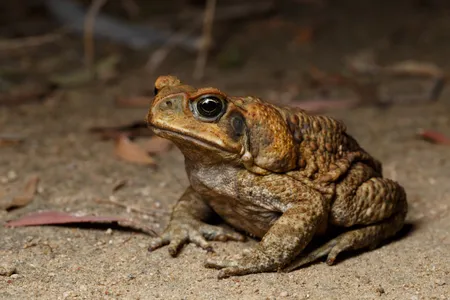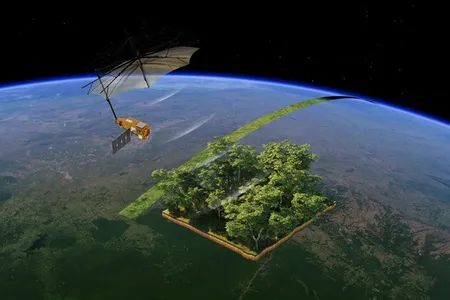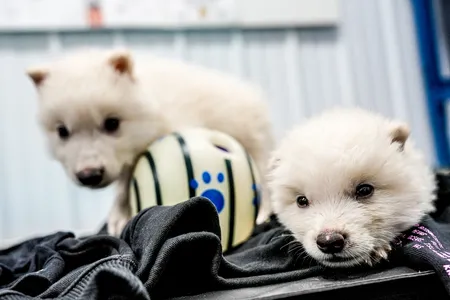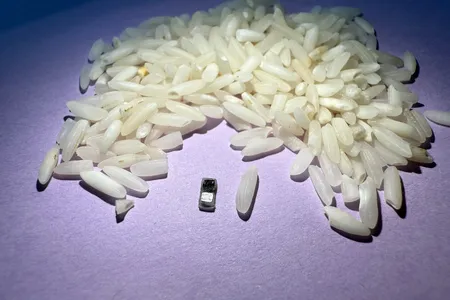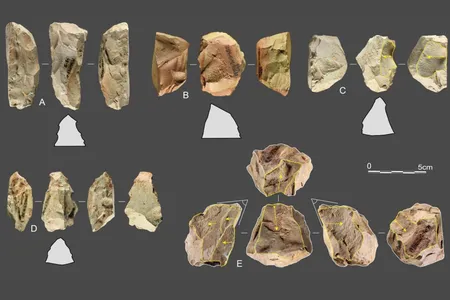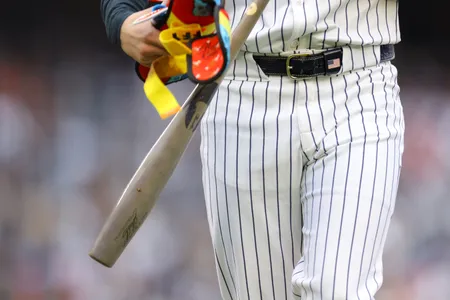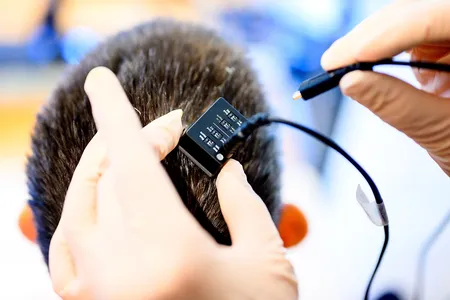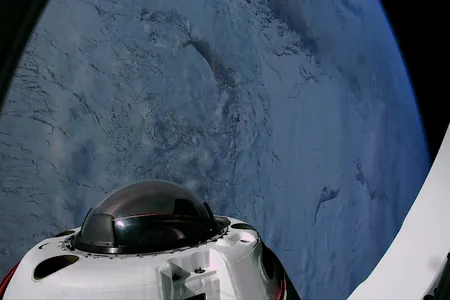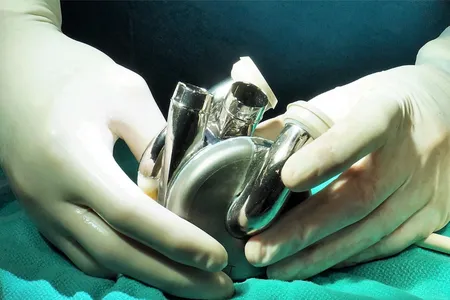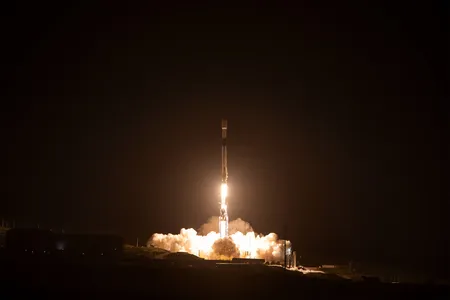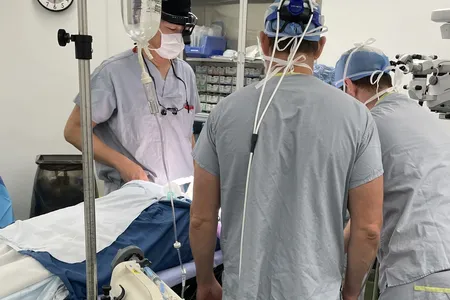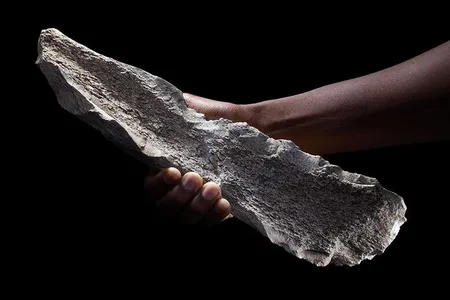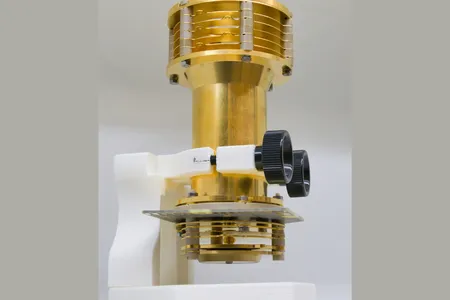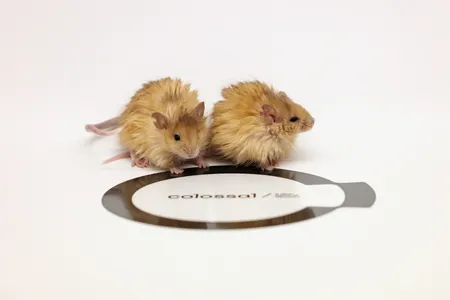Scientists Create Gene-Edited ‘Peter Pan’ Tadpoles That Could Control Invasive Cane Toads Through Cannibalism
To combat one of Australia’s most troublesome species, researchers are developing hungry tadpoles that never grow up
A New Satellite Will Map the Carbon Content of Rainforests From Space, and It’s Set to Launch This Month
The European Space Agency’s new probe, Biomass, will spend five years orbiting the planet and gathering radar imagery of forests across multiple continents
In a World First, Researchers Mapped Part of a Mouse’s Brain in Incredible Detail. It’s a Leap Forward for Neuroscience
The 3D brain map includes more than 200,000 cells, 523 million synapses and over two miles of axons, representing the most detailed wiring diagram of a piece of mammal brain ever constructed
Here’s the Secret to Making the Perfect Cup of Pour-Over Coffee, According to Physicists
By adjusting the pouring technique and height, the new method could use 10 percent fewer coffee grounds without compromising on strength or flavor
Have Dire Wolves, Which Went Extinct More Than 10,000 Years Ago, Really Been Brought Back to Life?
Pioneers in the science of “de-extinction,” an American company has announced the births of three pups whose genes resemble those of a species that hasn’t roamed Earth for millennia
Researchers Develop the World’s Smallest Pacemaker, and It Could Be Revolutionary for Newborn Babies With Heart Defects
The new device is smaller than a grain of rice and gets absorbed by the patient’s body when it’s no longer needed, eliminating the risks of an extraction surgery
Stone Tools Discovered in China Resemble Neanderthal Technology Used in Europe, Creating a Middle Stone Age Mystery
Archaeologists previously assumed that East Asia did not see considerable tool development during the Middle Paleolithic, but new findings might change that widely held idea
Can A.I. Resurrect a Delacroix Mural That Was Destroyed in a Fire More Than 150 Years Ago?
A new project called Digital Delacroix is training cutting-edge technology on the French painter’s style to unravel the lost artwork’s secrets
The Science Behind the MLB ‘Torpedo’ Bats That Everyone’s Talking About—How Do They Work? And Are They Really Better?
Developed by a physicist, these bats have their widest part, called the barrel, closer to the player’s hands to offer a better chance of hitting the ball on their “sweet spot”
Enhanced Brain Implant Translates Stroke Survivor’s Thoughts Into Nearly Instant Speech Using Artificial Intelligence
The system harnesses technology similar to that of devices like Alexa and Siri, according to the researchers, and improves on a previous model
Four Civilian Astronauts Capture Imagery of Earth’s Icy Poles on Fram2, the First Crewed Mission to Polar Orbit
The mission, funded and commanded by a cryptocurrency entrepreneur, was launched by SpaceX on Monday and has grabbed headlines for its flight path
First Orbital Rocket Launched From Western Europe Crashes Into Sea After Roughly 30-Second Flight
Isar Aerospace, the company behind the rocket, is still heralding the launch as a success due to the data it provided
Australian Man Makes History by Living With a Titanium Heart for More Than 100 Days Before Receiving a Transplant
The man, who was in his 40s and suffering from severe heart failure, was also the first person to leave the hospital with a titanium heart. He is recovering well after getting a new, donor heart
See Last Week’s Stunning Eclipse From the Moon in Photos Captured by the Blue Ghost Lander, Now at the End of Its Mission
The spacecraft carried out the longest commercial operation on the moon to date—and also made history during its rare chance to document this celestial event
NASA’s New Space Telescope Launches to Explore the Origins of the Universe After a Series of Delays
Called SPHEREx, the instrument will map 450 million galaxies and search for water molecules that may be clinging to space dust
Climate Change Might Increase Satellite Collisions, Limiting How Many Can Safely Orbit Earth, Study Finds
Greenhouse gas emissions could reduce drag in the upper atmosphere, leaving more space debris in orbit and making satellites more vulnerable to damage, according to new research
Surgeons Are Conducting Rare ‘Tooth-in-Eye’ Surgeries to Restore Vision to Blind Patients in Canada
The complex procedure involves extracting a patient’s canine tooth, adding a plastic optical lens to it and surgically embedding it in the eye
Human Ancestors Were Making Bone Tools One Million Years Earlier Than Previously Thought
Archaeologists have discovered a collection of prehistoric animal bones in Tanzania that suggests early humans figured out how to transfer tool-making techniques “from stone to bone” 1.5 million years ago
Scientists Hope This Tool Could Identify Tiny Fossils on Mars, Revealing Hints to Potential Early Life on the Planet
If Mars ever hosted microorganisms in its bygone oceans, their fossils might still be preserved in minerals—and now, we have a new potential way to find them
Biotech Company Creates ‘Woolly Mouse’ as a Step in Its Quest to Resurrect Woolly Mammoths Through Gene Editing
Colossal Biosciences leaders say the fluffy, golden-haired mice help validate their technique to “de-extinct” species, but outside scientists remain skeptical
Page 3 of 96
